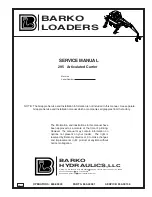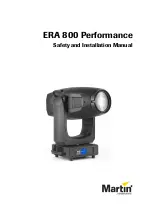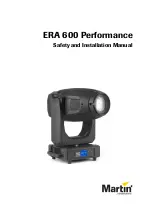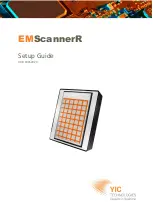
6. Installation
28
PNEG-240
Chain Feeding System
Suspending the System
When the assembled feeding system is in its place on the floor, snap chalk lines on the ceiling or on the
bottom chords of trusses directly above the trough lines.
Extra support is needed above the hopper and to mount the overhead winches. These headers should be
of good sound 2 x 6 lumber and long enough to span a pair of trusses.
Attach headers to the truss chords with lag screws or U-bolts. When using lag screws, drill pilot holes in
the trusses to avoid splitting the wood. The winch headers must be centered on the chalk line near the
middle of the building.
Install the winches by mounting them on the headers with bolts or lag screws. When unpacking winches,
be careful to keep them clean. Sand or grit will ruin the winch.
To suspend the hopper will require three (3) 3-3/8" (85.7 mm) pulleys firmly attached to the header boards
by means of eye bolts and washers or a double sling of 3/16" (5 mm) cable wrapped around the board and
secured with two (2) cable clamps. Install the three (3) 3-3/8" (85.7 mm) pulleys on either side of the center
line in a pattern identical to the three (3) suspension points of the hopper.
Screw cup hook along the entire ceiling chalk line. These must be staggered, with every other hook
on opposite sides of the line and 1" (25.4 mm) from the line. This will provide a smooth, uniform draw on
the drop cables and keep cables from touching each other. Hang a 1-3/4" (44 mm) pulley on each hook.
A block and tackle system must be rigged on the winch to draw the main pull cable. Start by determining
how high you wish to raise the feeder. The first length of 3/16" (5 mm) cable should be four times the
maximum rise distance plus 4' (122 cm). For example, 44' (13.5 m) of cable will provide a 10' (3 m) rise;
48' (14.5 m) for an 11' (3.3 m) rise.
Attach one end of the 3/16" (5 mm) cable to the winch by passing it through one of the holes in the winch
frame, between the mounting plate and the large cog. Fasten the cable to the winch with two (2) large
cable clamps. Double clamping is important at all major stress points. Thread the other end of the cable
through one 3-3/8" (85.7 mm) pulley, then find the center of the cable and attach it to the winch
drum by means of the clamp that is built into the drum. Thread the end of the cable through another
3-3/8" (85.7 mm) pulley and attach it to the other hole in the winch frame, using two (2) clamps.
IMPORTANT:
To avoid kinks, always roll the cable off the spool with the spool turning. Never “peel” cable
off the side of the spool. It is best to use a dowel rod or a similar stick or rod as an axle so
the spool can turn freely.
Figure 6O
















































